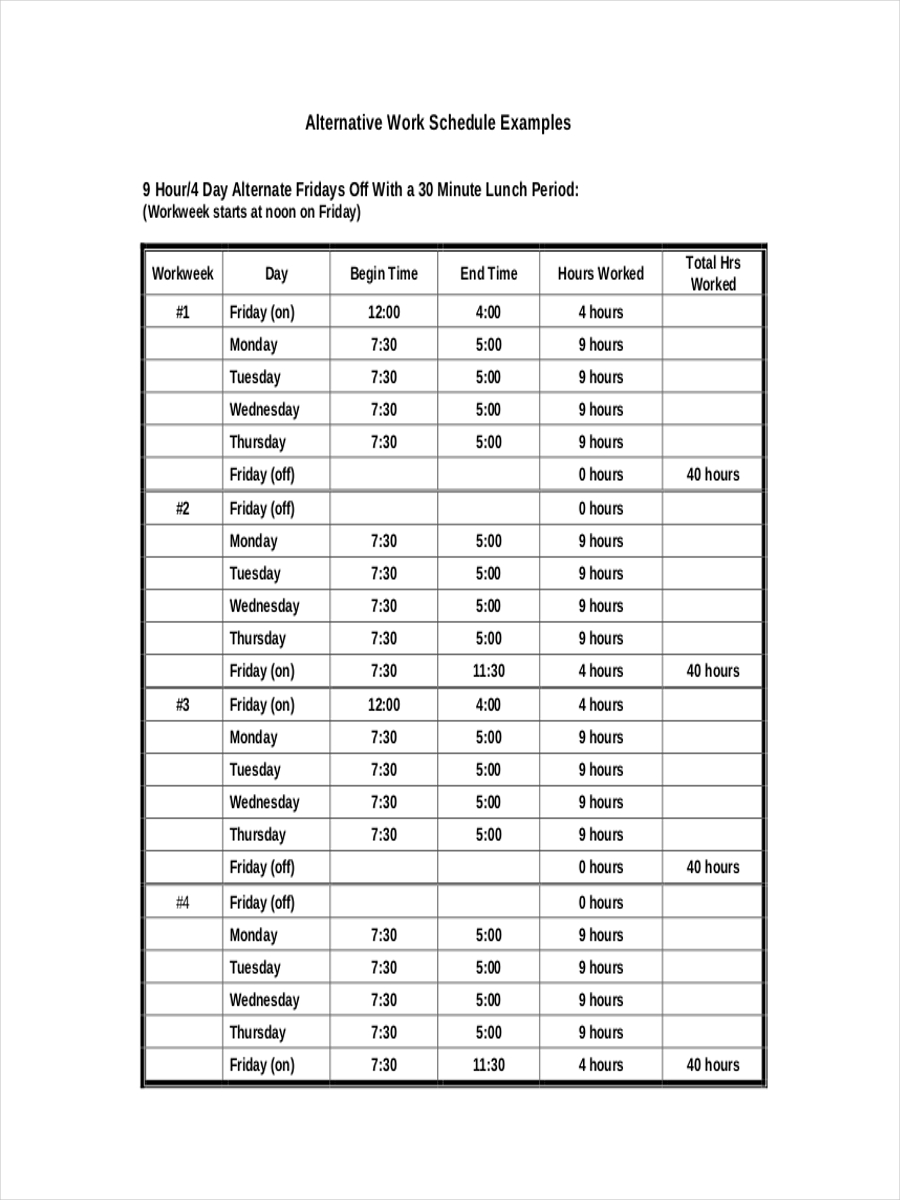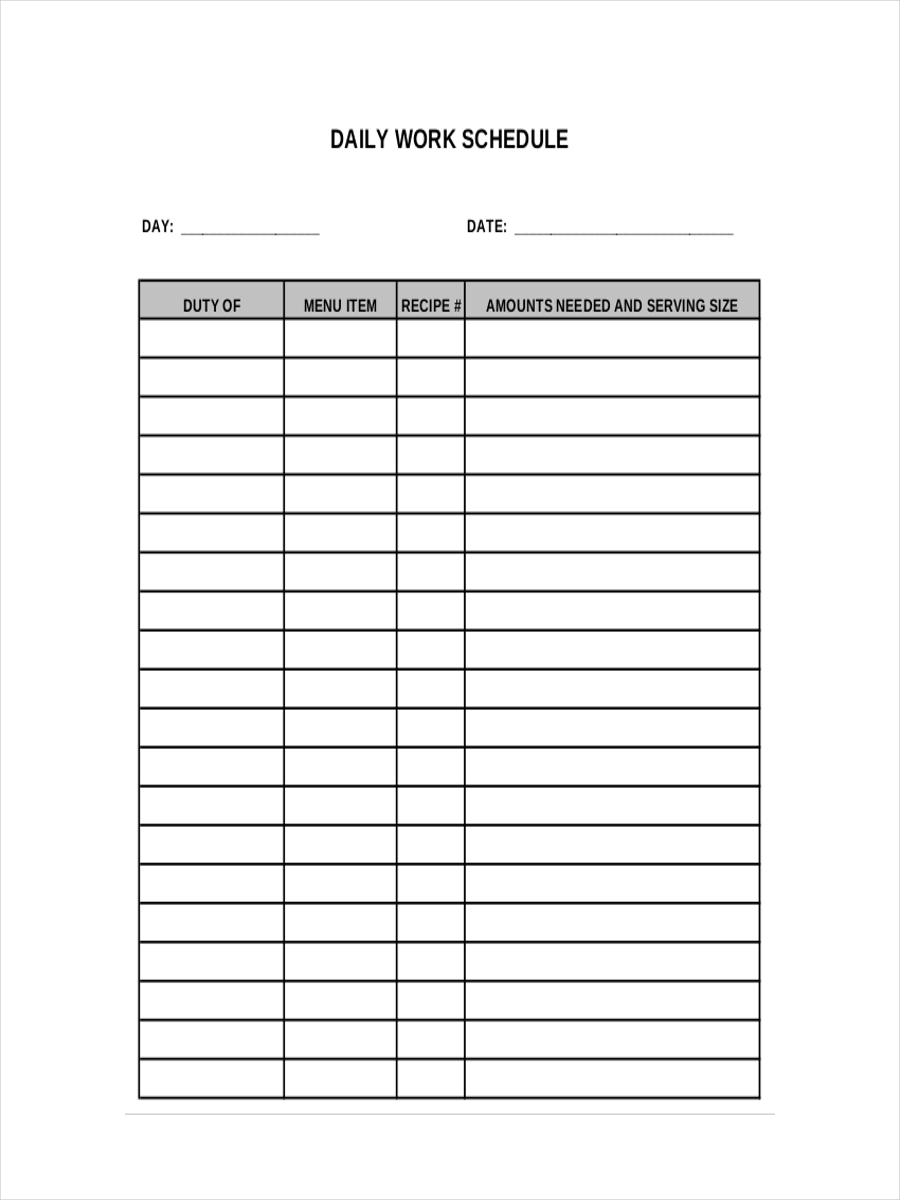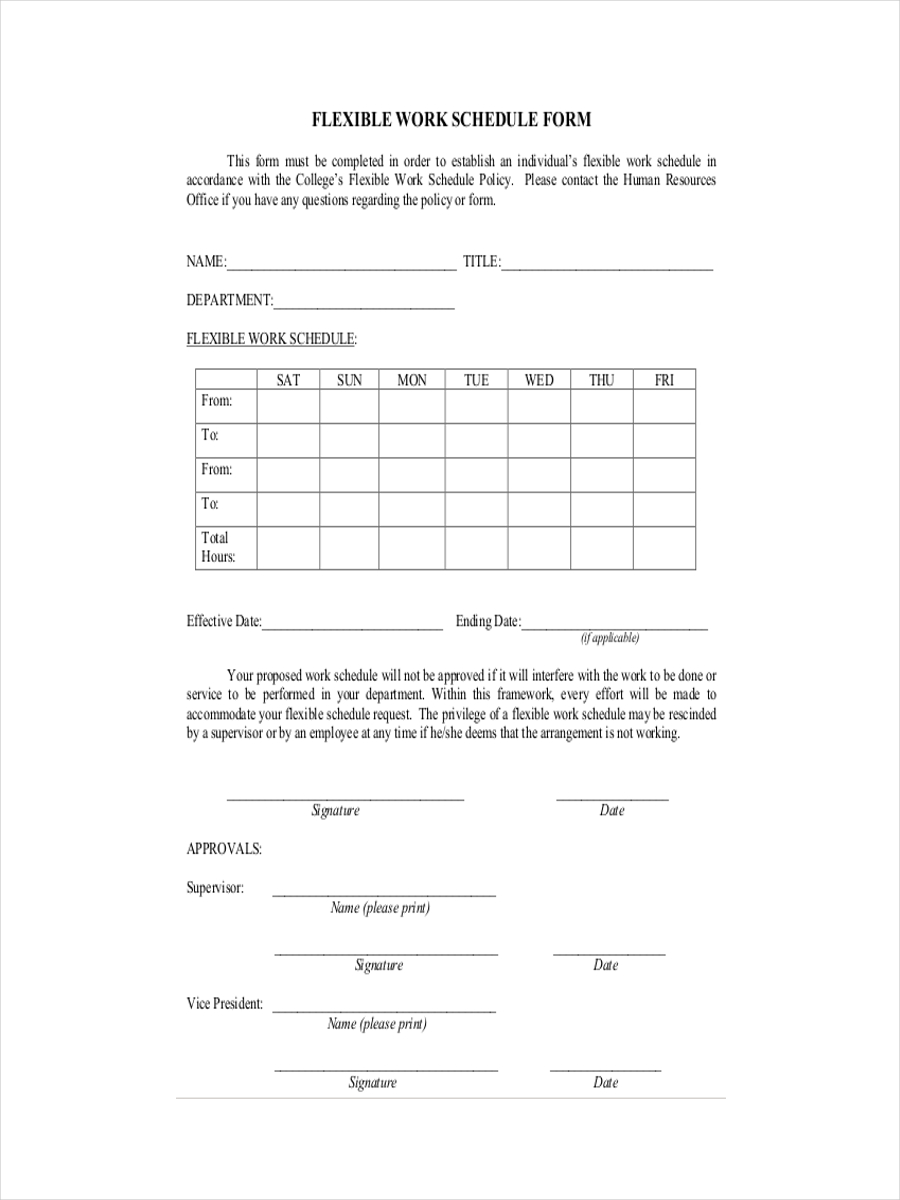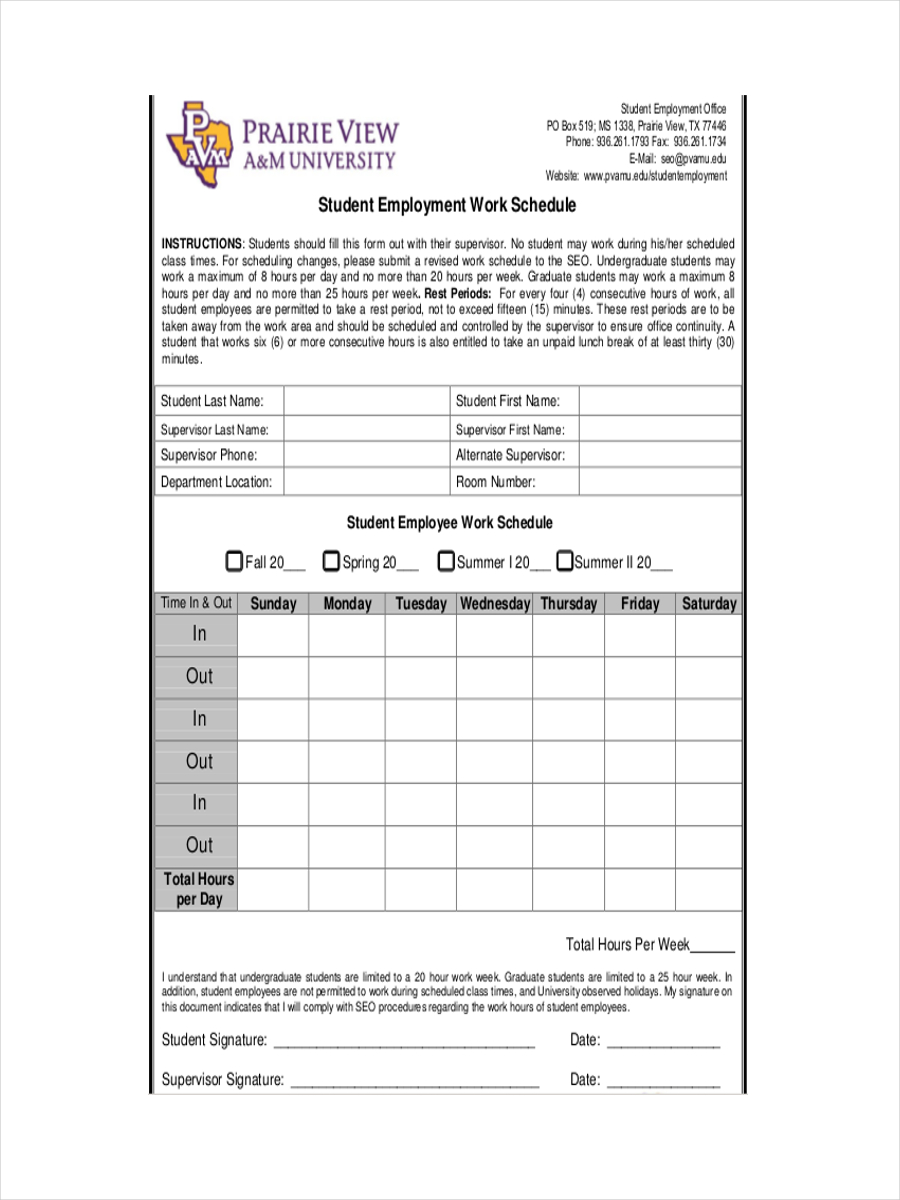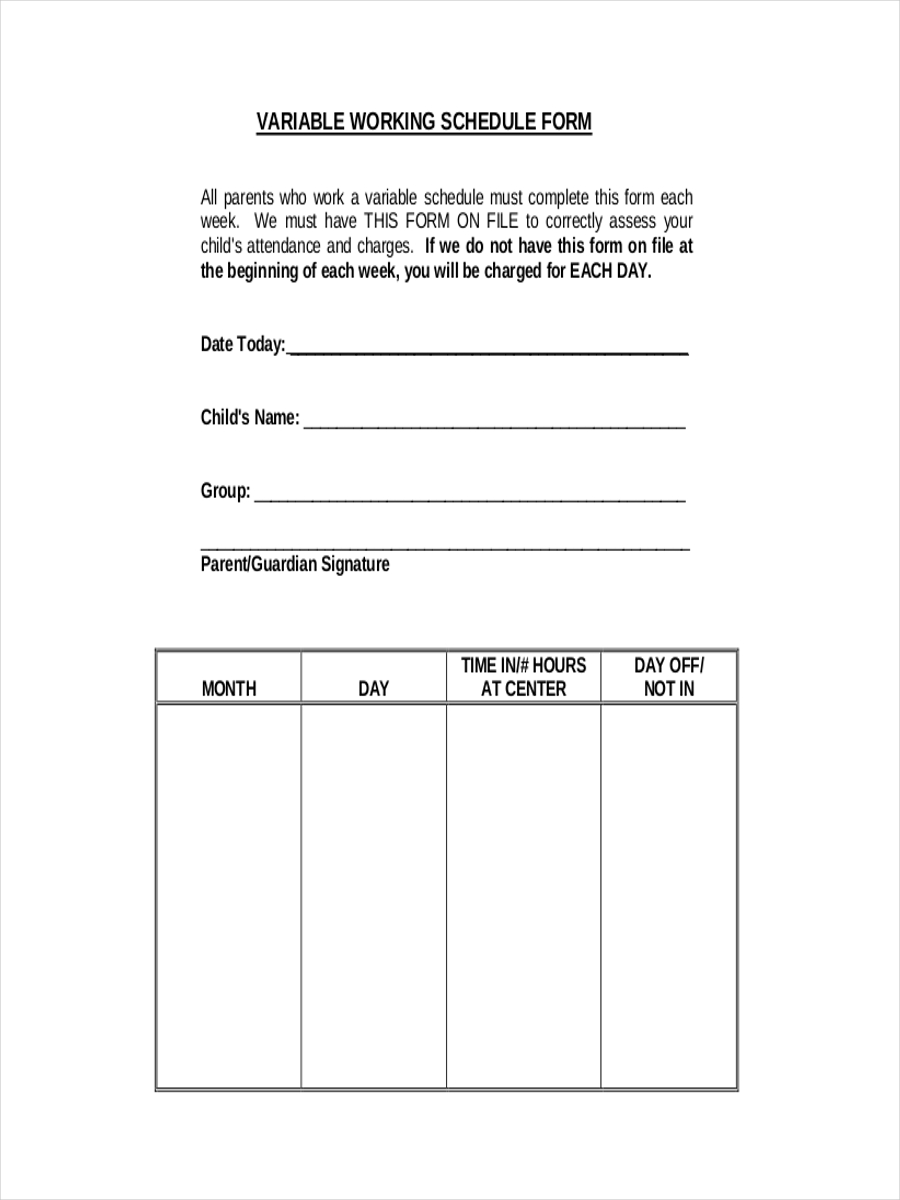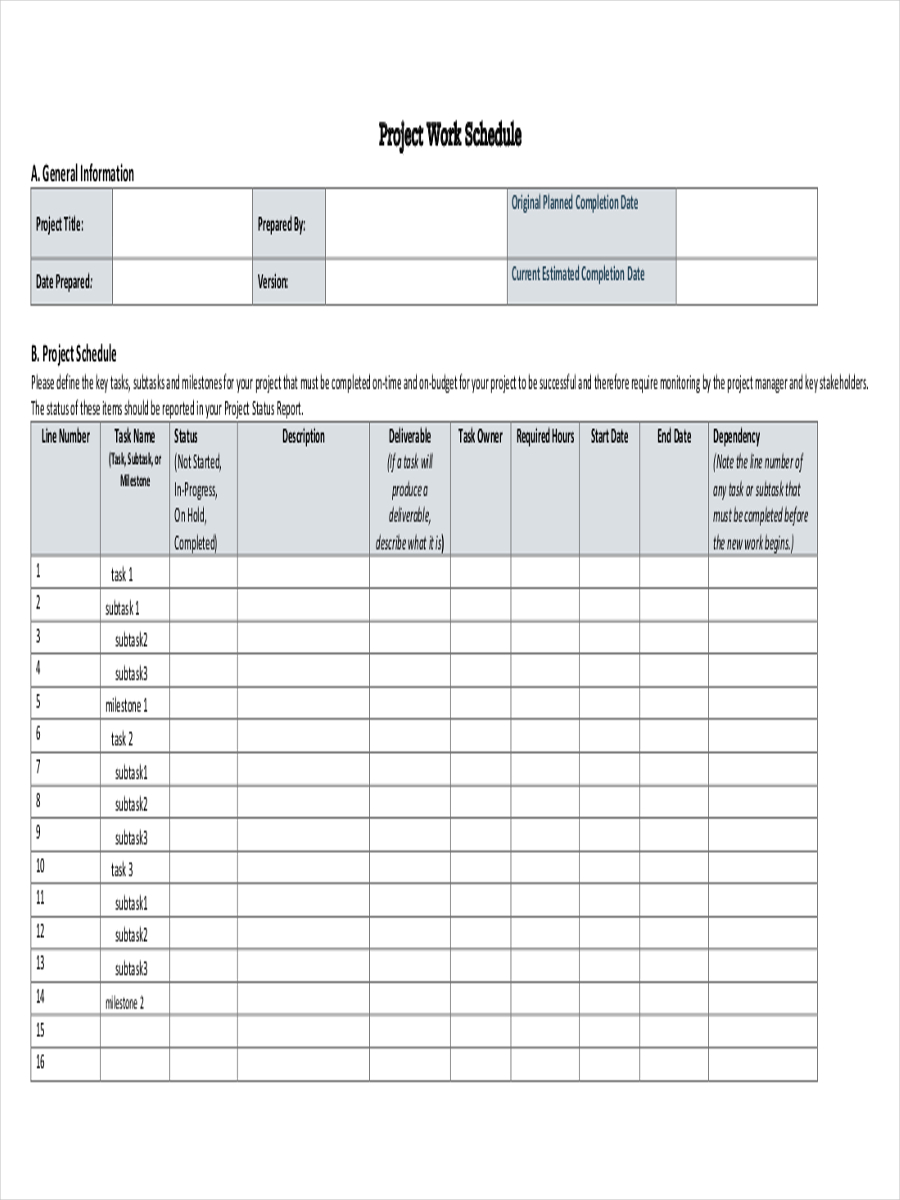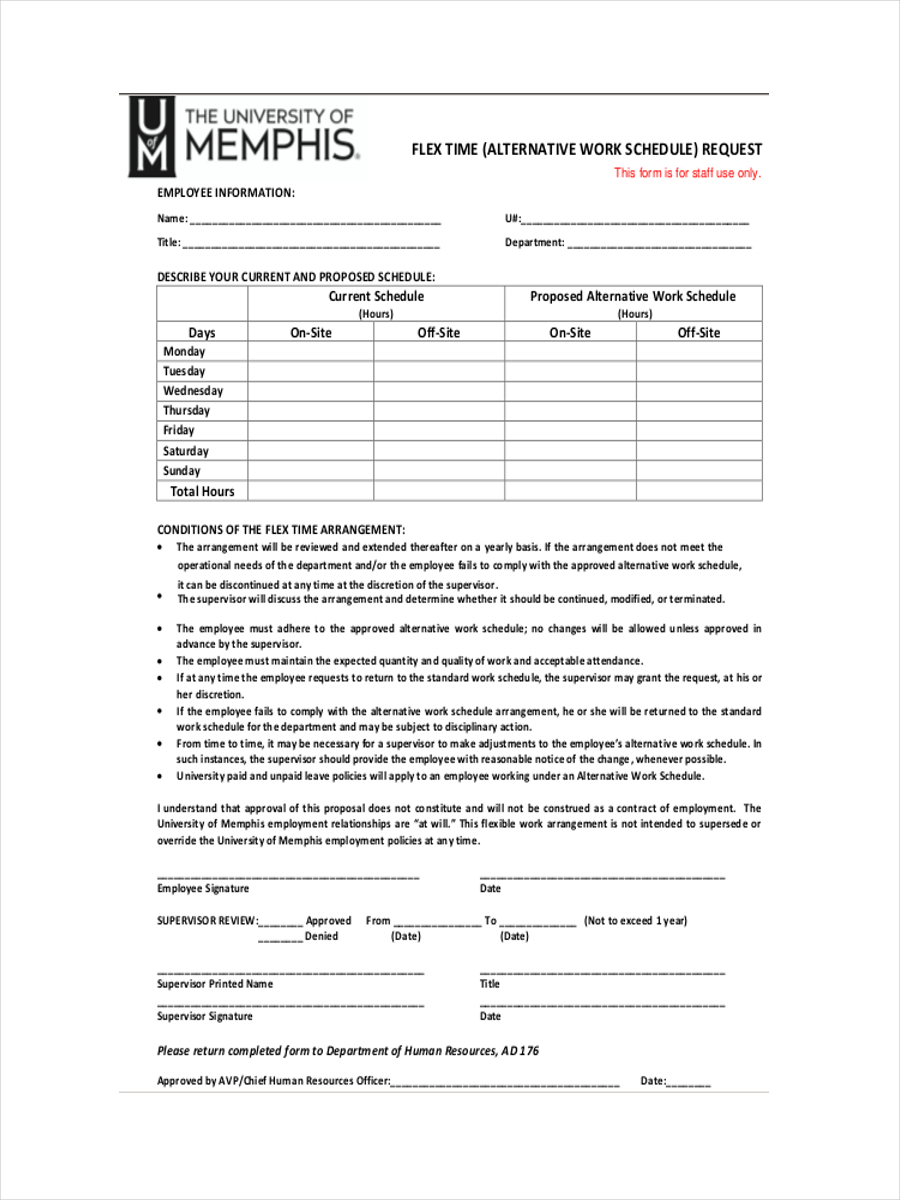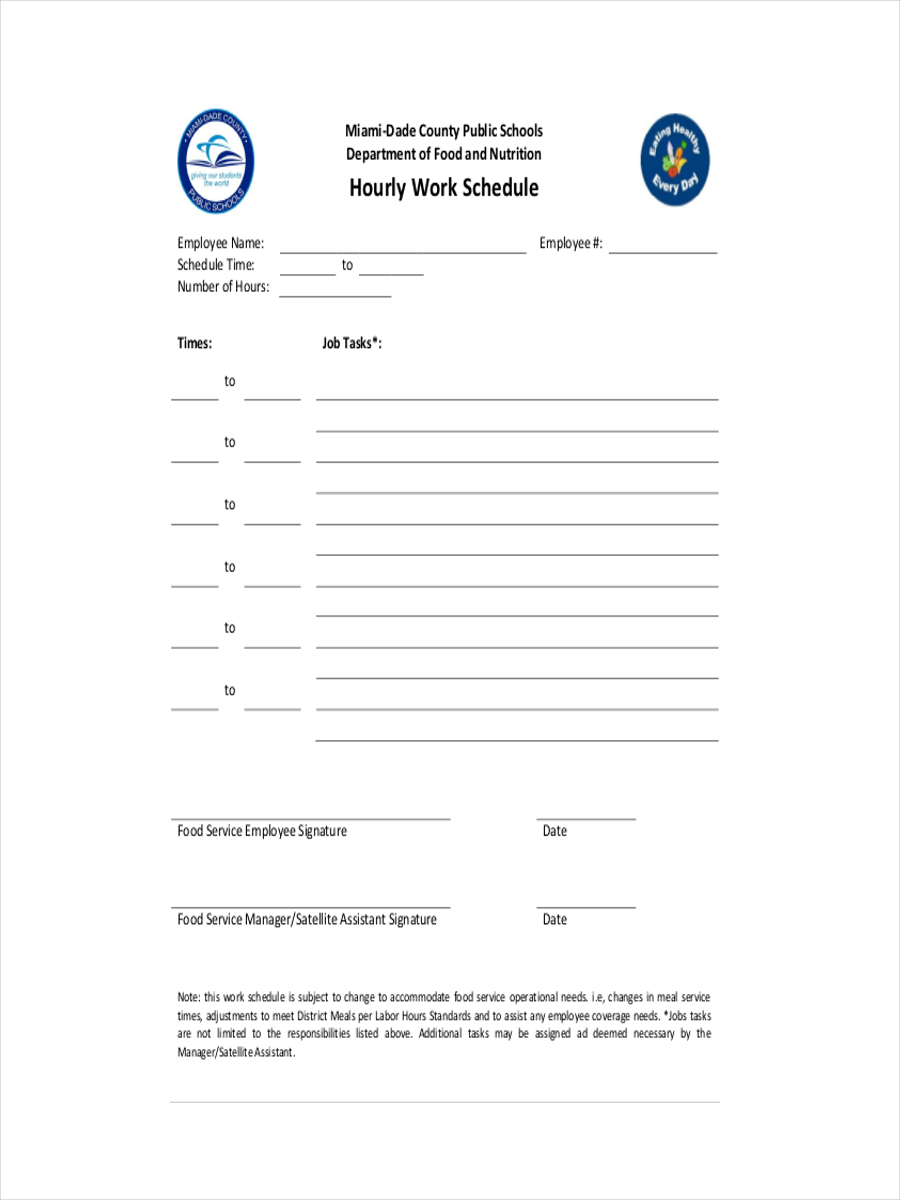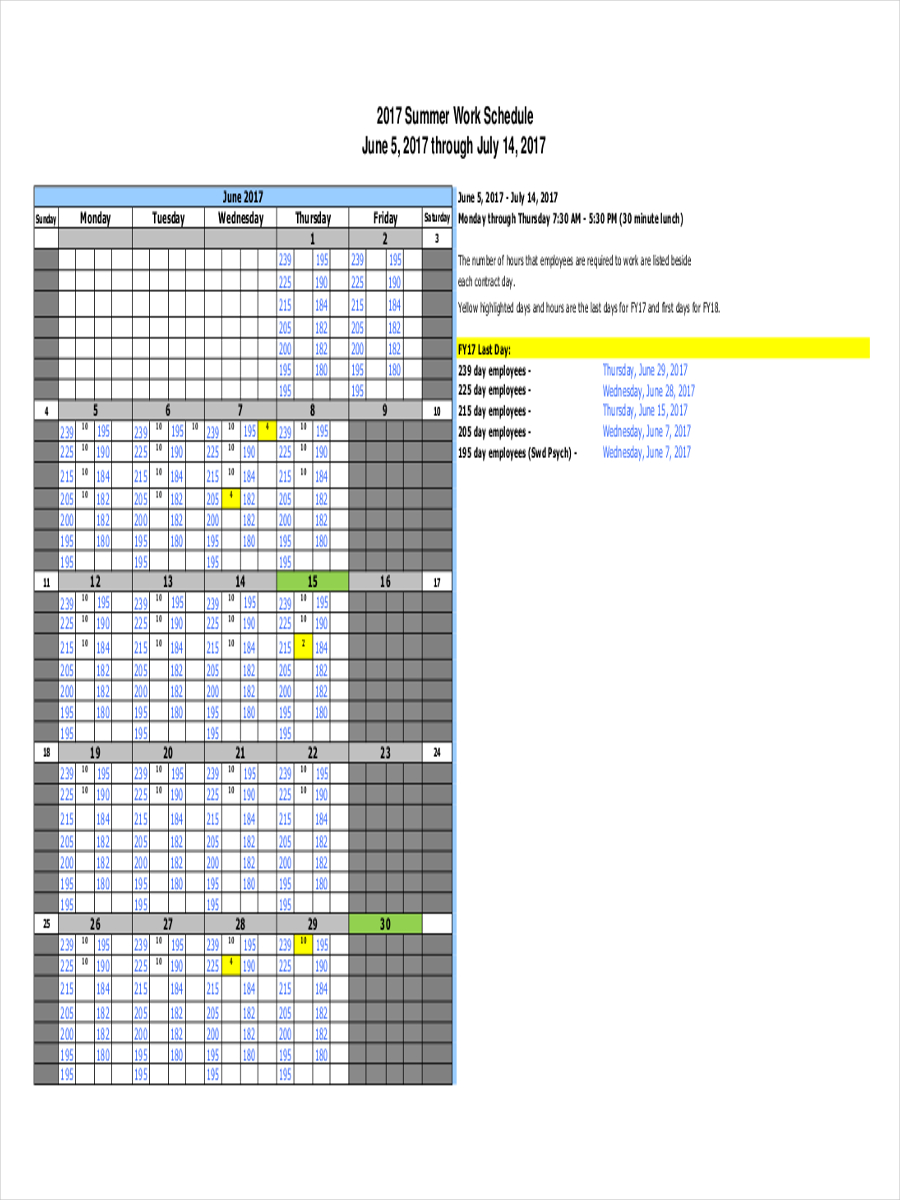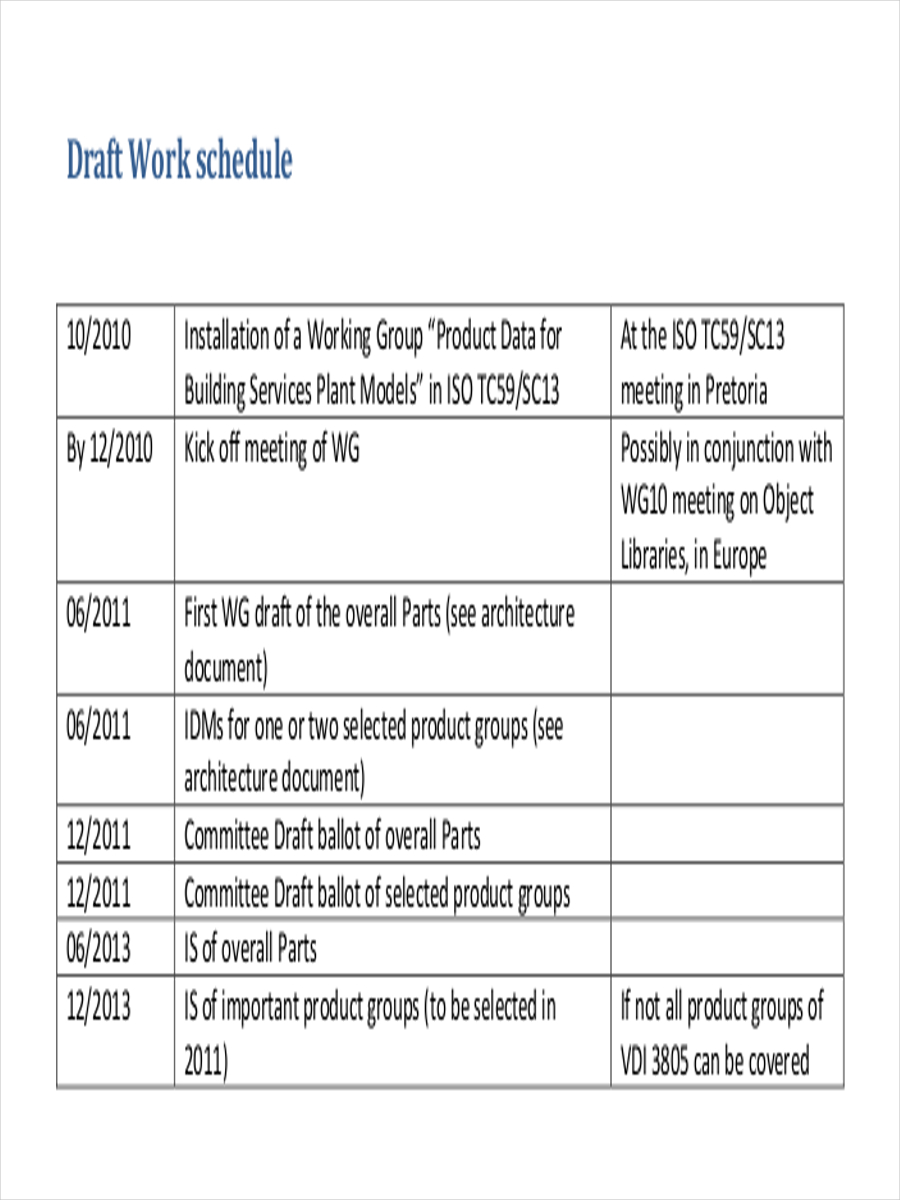15+ Work Schedule Examples to Download
There’s no denying that the average individual is always on the run. We all have appointments to attend to, responsibilities to accomplish, and last-minute tasks to resolve. As a member of a company, you are given an employee schedule for work to carry out. This is so your employers may properly monitor your behavior and performance. It’s also helpful in keeping yourself disciplined and ready at all times. Although it may seem intimidating, a work schedule can actually ensure a smoother work flow.
Work Schedule Template
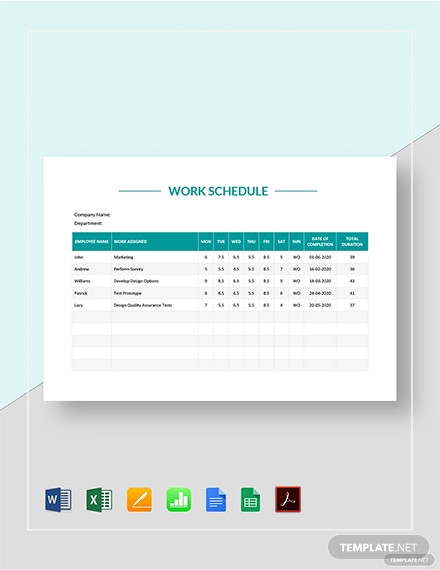
Daily Work Schedule Template
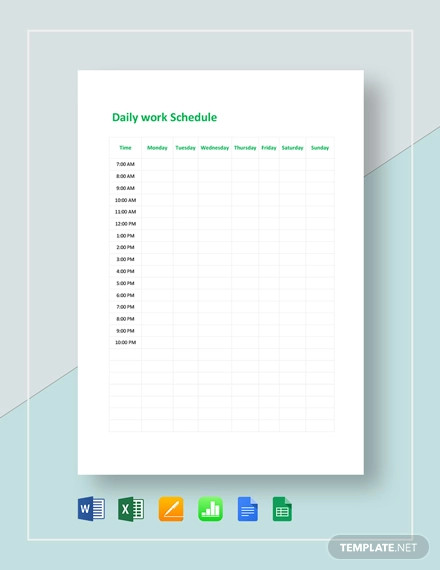
Blank Work Schedule Template
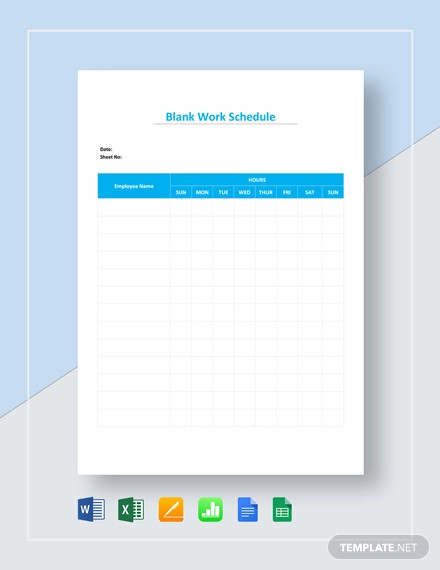
Weekly Work Schedule Template
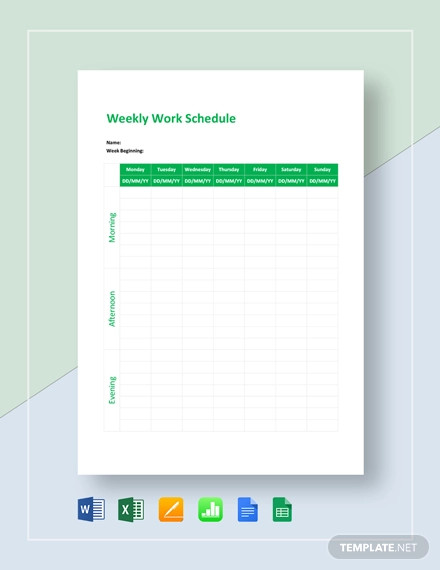
Employee Work Schedule Template
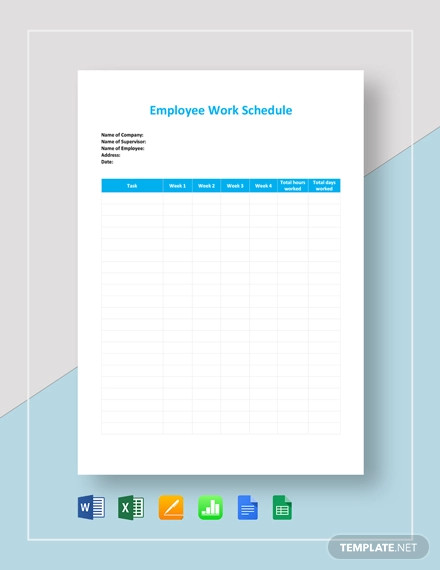
Monthly Work Schedule Template
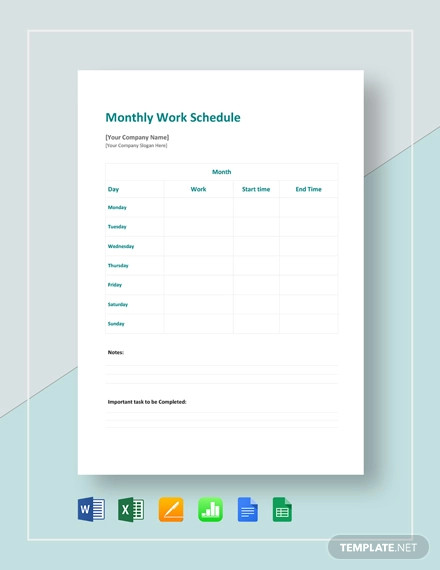
Alternative Work Schedule
Standard Work Schedule
Schedule for Flexible Work
Student Employment Work Schedule
Variable Work Schedule
What Is a Work Schedule?
In the workplace, a work schedule is defined as a list of responsibilities and its corresponding working time for a given period of time.
This is usually reflected in agenda examples, work plans, time cards, and the like. Essential information regarding a certain individual or group is reflected in these schedules to stay properly organized. For example, a training schedule is set so that a program may be successfully carried out within the allotted time. Schedule examples would typically be listed according to the days of a week.
How to Create a Work Schedule?
A work schedule should be able to properly reflect one’s responsibilities and performance at a given time. To do so, you must identify who the work schedule is for. Once that is done, it might be necessary to specify the given roles and responsibilities that will take place within the schedule. A typical work schedule will also include the total number of hours garnered to carry out one’s task.
Remember, we define a schedule as a time-management tool for us to complete a task or event that is intended to take place. With this in mind, you must create a work schedule that presents all the necessary information for a given date or time frame.
Project Work Schedule
Staff Alternative Work Schedule
Schedule for Hourly Work
Schedule for Summer Work
Draft Work Schedule
Importance of a Work Schedule
A work schedule is important for one primary reason, to keep oneself informed and well-organized.
For instance, an employee schedule is created so an employee may be reminded of what must be accomplished by the end of the day. This is to properly monitor one’s performance within the defined working hours.
Some work schedules are designed in such a way that an individual’s progress for a given project may be carefully assessed. This is to ensure that no time has been wasted.
Other work schedule samples are used to document one’s attendance and tardiness. This is so the company’s management may evaluate the behavior and attitude of their employees.
Guidelines for a Work Schedule
- Create a work schedule that is practical. This would mean that a task would be given a considerable amount of time to accomplish.
- State reminders and guidelines if necessary. This could be instructions to carry out the work schedule.
- Test-run your schedule. It’s possible that your work schedule may be too unrealistic. It’s important to set tasks and sub-tasks separately for one to properly focus on.
- Have it confirmed. It’s important to check with the individuals involved before you implement a work schedule. This is to avoid any conflict.



